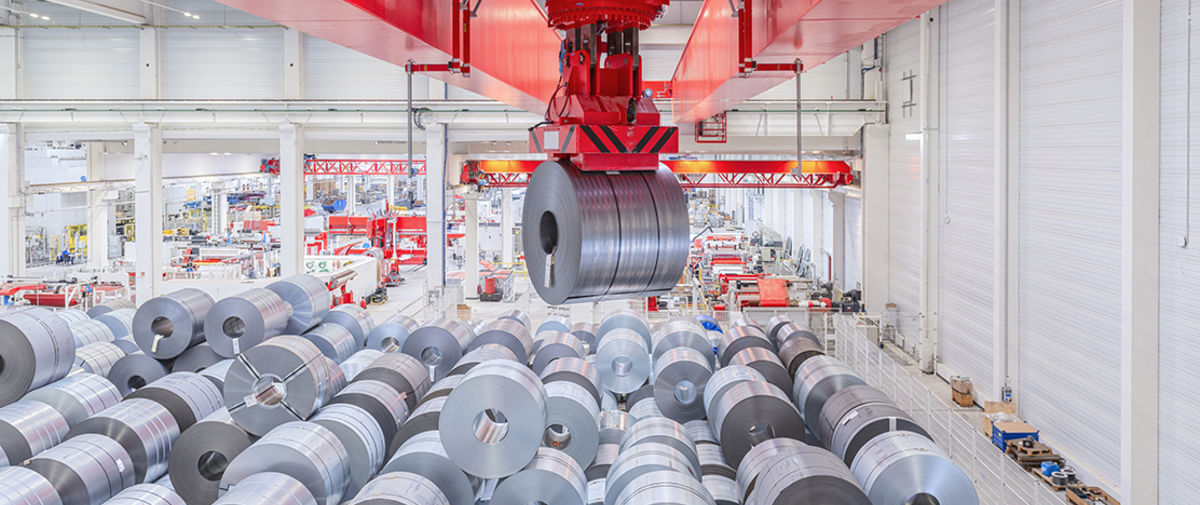In today's rapidly changing industrial landscape, steel producers strive to achieve higher levels of automation to drive efficiency in all processes, particularly material flow. Here at Konecranes, we are leveraging advanced simulation and planning tools to support customers in optimizing their warehouse management.
Partnering with us enables companies to develop an efficient, cost-effective material flow system and warehouse management structure through comprehensive conceptual planning and simulation analysis.
Creating a simulation model to optimize material flow and storage
To ensure the necessary number of overhead traveling cranes with adequate handling and storage capacity for production and shipment needs, we first develop a simulation model for new packing and shipping functions.
The model is then expanded to encompass the entire production process, ensuring the proposed material flow system is aligned with customer specified Key Performance Indicators (KPIs). The simulation model is also used to optimize storage strategies, capacity, AGV/conveyor routes, and coil logistics within the facility.
Conceptual steel storage system developed to maximize cost-efficiency and performance
We work with our customers to design a conceptual steel storage system that meets future demands in throughput capacity, storage capacity, and handling capacity while maintaining cost-efficiency. Utilizing proven dynamic simulation models and standardized modeling templates, we can achieve high-precision conceptual planning for the entire logistic chain, for steady handling and storage capacity throughout the system’s lifecycle.
Structured approach to project execution
We adopt a structured approach to material flow optimization, dividing projects into three phases: analysis of the customer processes, model adaptation and concept evaluation, with a focus on balancing handling capacity and storage capacity to achieve the lowest possible costs.
Utilizing simulation models that represent layout and crane characteristics, we can validate design components, optimize crane behavior, stacking height, and operational rules, and adapt the model based on actual data and customer discussions. Our simulation helps customers make informed and cost-effective decisions for their intralogistics processes.
Evaluating concepts for efficiency and flexibility
The evaluation process considers a variety of aspects – from storage density and capacity to flexibility for changes in storage time and implementation. The simulation model also includes 3D animation, facilitating better understanding and validation of proposed concepts.
Konecranes provides detailed reports on storage and handling capacities, layout design, terminal-specific characteristics, process and control rules, and results of each experiment for transparency and accountability.
Collaborative process for high-value results
To achieve high-value results, we emphasize an interactive, collaborative approach that involves regular meetings between our team and the customer’s team. We make sure our project team has extensive experience in similar projects in order to provide valuable insights and reliable solutions for each stage of the collaboration.
Conclusion
By partnering with us for material flow and warehouse management system development, steel production companies can reap the benefits of increased automation, optimized material flow and warehouse management, and maximized cost-efficiency.
Leveraging advanced simulation models and expert guidance, we help empower steel facilities to rise to the challenges of today's market and continue driving innovation in the industry.
Learn more about Konecranes Warehouse Management System for coil storage
